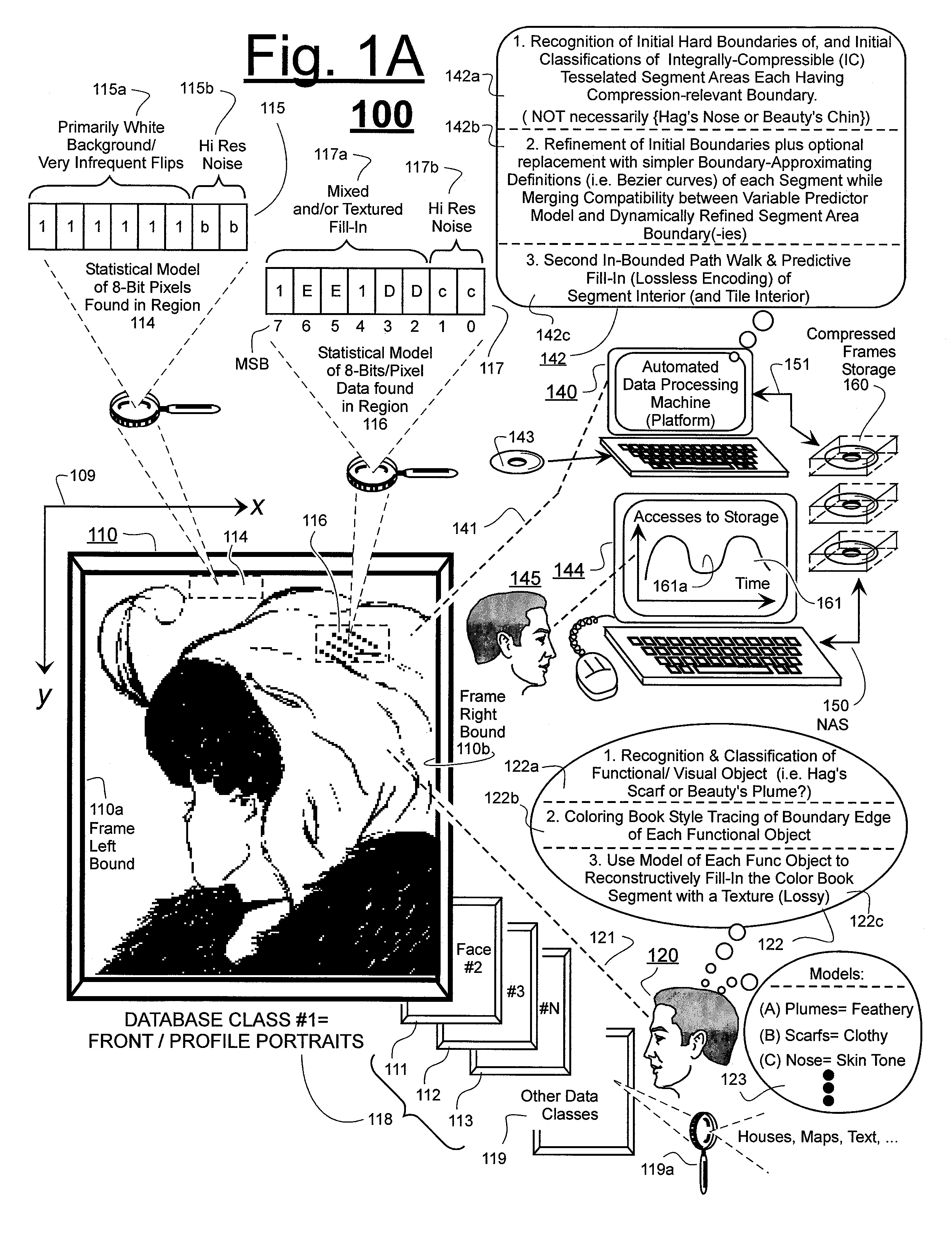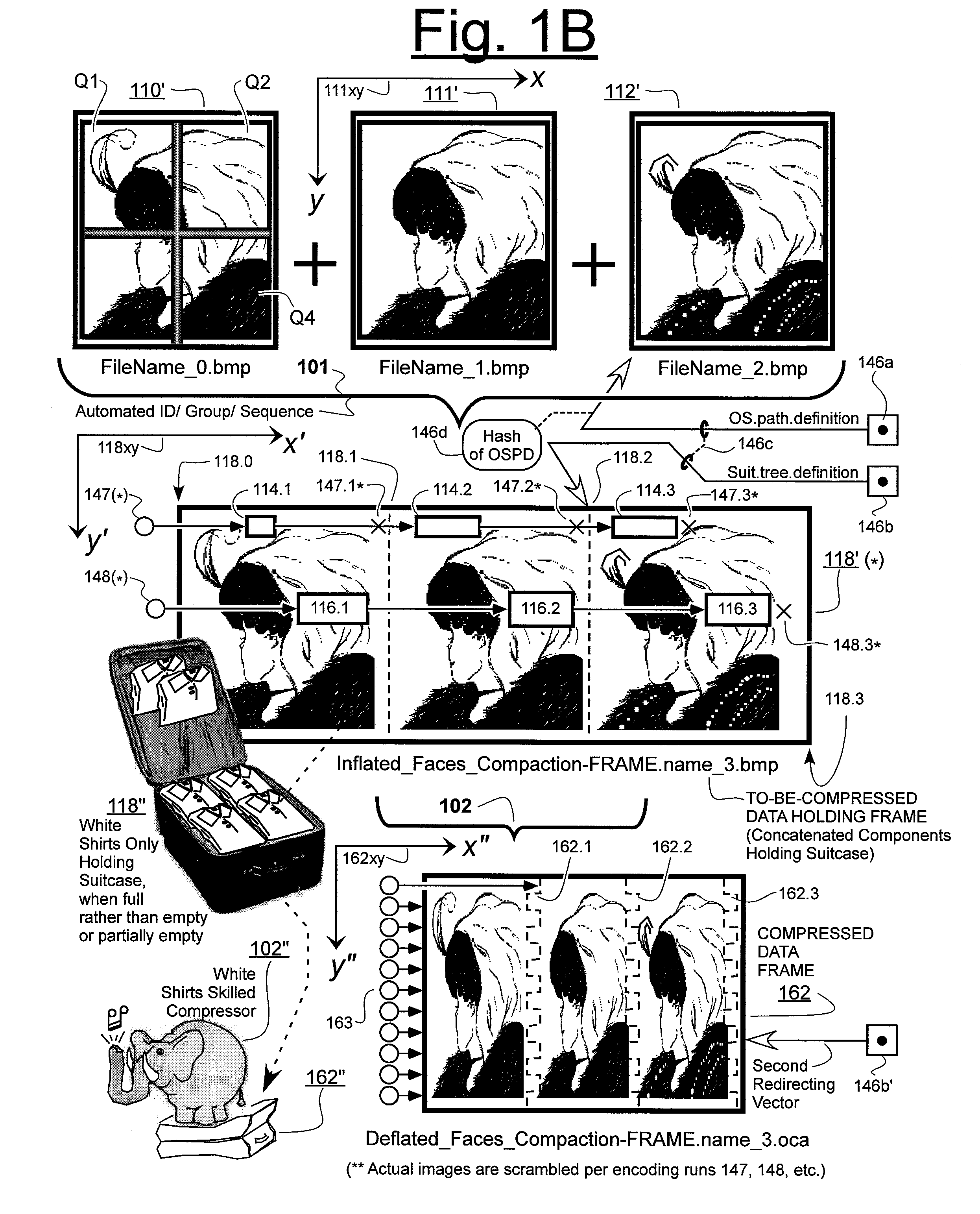Methods and apparatus for reducing storage size
a technology of storage size and methods, applied in the field of methods and apparatus for reducing storage size, can solve the problems of wasting predictor's resources, time and energy, impede adaptive predictors, etc., and achieve the effect of saving energy
- Summary
- Abstract
- Description
- Claims
- Application Information
AI Technical Summary
Benefits of technology
Problems solved by technology
Method used
Image
Examples
Embodiment Construction
B illustrates a plurality of linked lists each defining an optimally compressible sequence of data from alike segment areas where the linked lists can be simultaneously traversed by parallel processing units if desired;
[0055]FIG. 5C shows an enlarged view of an in-segment major walk and of optional finer, in-tile looping walks that may be taken when moving left-to-right or moving down or moving right-to-left from one 3×3 tile to a next such tile;
[0056]FIG. 5D provides details regarding a first time, trial-and-error compression walk and an associated process of redefining, smoothing and approximating the segment borders so as to provide for a quicker inverse transformation process and reduced storage needs for segment boundary definitions;
[0057]FIG. 6A shows the data structure of a segment-to-segment jump table that may be employed in accordance with the disclosure;
[0058]FIG. 6B illustrates how a running hash may be used to insert a dictionary lookback pointer into a compression outp...
PUM
 Login to View More
Login to View More Abstract
Description
Claims
Application Information
 Login to View More
Login to View More - R&D
- Intellectual Property
- Life Sciences
- Materials
- Tech Scout
- Unparalleled Data Quality
- Higher Quality Content
- 60% Fewer Hallucinations
Browse by: Latest US Patents, China's latest patents, Technical Efficacy Thesaurus, Application Domain, Technology Topic, Popular Technical Reports.
© 2025 PatSnap. All rights reserved.Legal|Privacy policy|Modern Slavery Act Transparency Statement|Sitemap|About US| Contact US: help@patsnap.com



